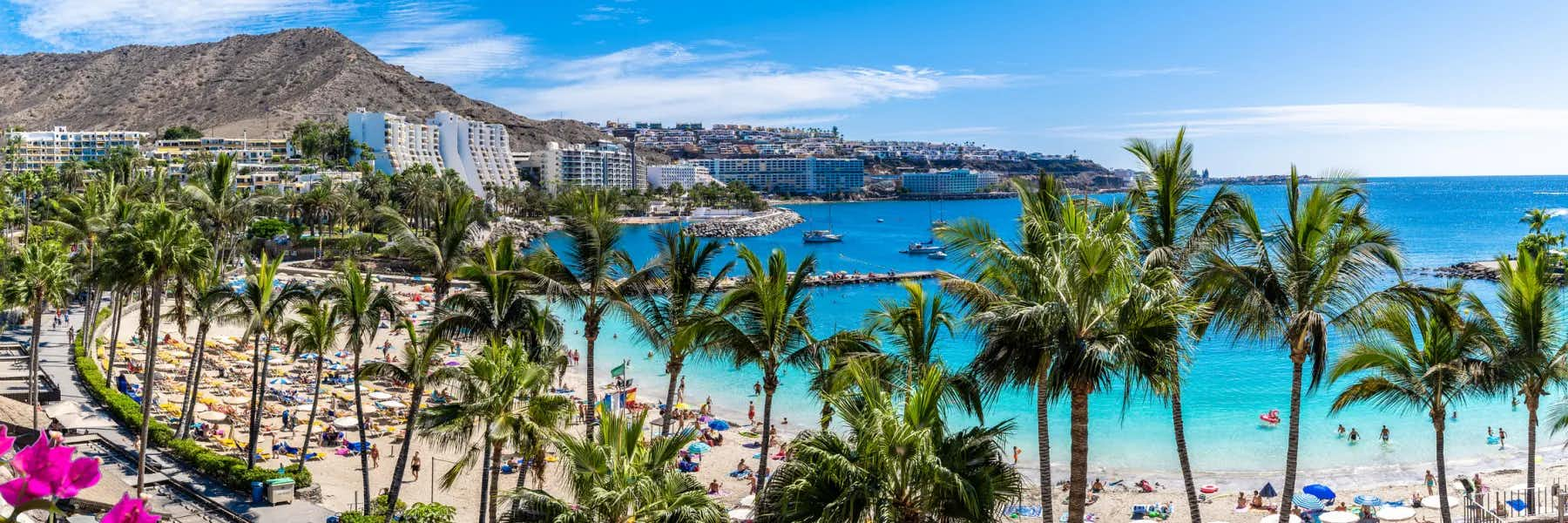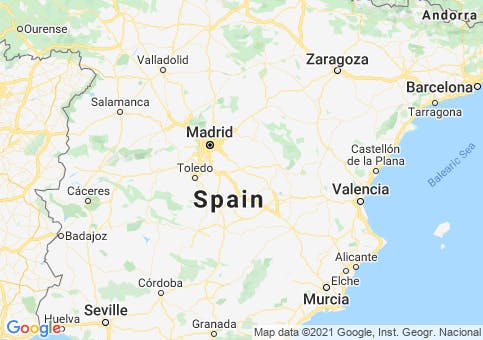By Michelle Thompson
The island of Gran Canaria offers all the benefits of living in mainland Spain, as well as the appeal of hot weather and an island destination. This location is perfect for anyone who loves spending time in the outdoors. Gran Canaria, the third largest of the Canary Islands, has so much to offer when it comes to its natural landscapes, you’ll love planning day trips around the island.
Gran Canaria is located in the Atlantic Ocean, about 62 miles from the coast of Africa. The island is around 31 square miles and has a maximum elevation of 6,417 feet thanks to two majestic mountains: Morro de la Agujereada and Pico de las Nieves. The largest of its cities, Las Palmas, has a population of 381,223. Gran Canaria mostly sits on top of mountainous areas made of volcanic rock and lush forests. The island has many beautiful beaches accessible along its coastlines, such as Playa de Maspalomas, Playa de Amadores, and Playa Tiritaña.
There are also several awe-inspiring rock formations and protected landscapes in and around the island. Roque Nublo, located in the municipality of Tejeda, has historic significance for local residents. Produced by a volcano and sitting at 262 feet high, it is one of the highest points on Gran Canaria and one of the tallest natural cliffs in the world. Roque Nublo is a sacred site for Indigenous communities on the island and is accessible by a 1.9-mile hike.
The Canary Islands were conquered by the Spanish in the year 1483 during the expansion of Spain into the new world. Las Palmas de Gran Canaria and the port city of Santa Cruz de Tenerife on the neighboring island of Tenerife are now joint capitals of the Canary Islands. Politically, the Canary Islands are considered autonomous communities, but residents recognize the constitution and laws of Spain. This way of governing was set up as a way of ensuring limited autonomy for some nationalities and regions in the country.
Agriculture was historically a big part of Gran Canaria’s economy, which focused on the production of sugarcane and grain on colonial plantations. However, today the island relies heavily on the tourism industry, with 80% of its income generated by national and global visitors.
Get Your Free Spain Report Today!
Get Your Free Spain Report Today!
Learn more about the lower cost of living in Spain and other countries in our free daily postcard e-letter. Simply enter your email address below and we'll also send you a FREE REPORT — Live the Good Life in Sunny, Affordable Spain.

By submitting your email address, you will receive a free subscription to IL Postcards and special offers from International Living and our affiliates. You can unsubscribe at any time, and we encourage you to read more about our Privacy Policy.
Retire in Gran Canaria
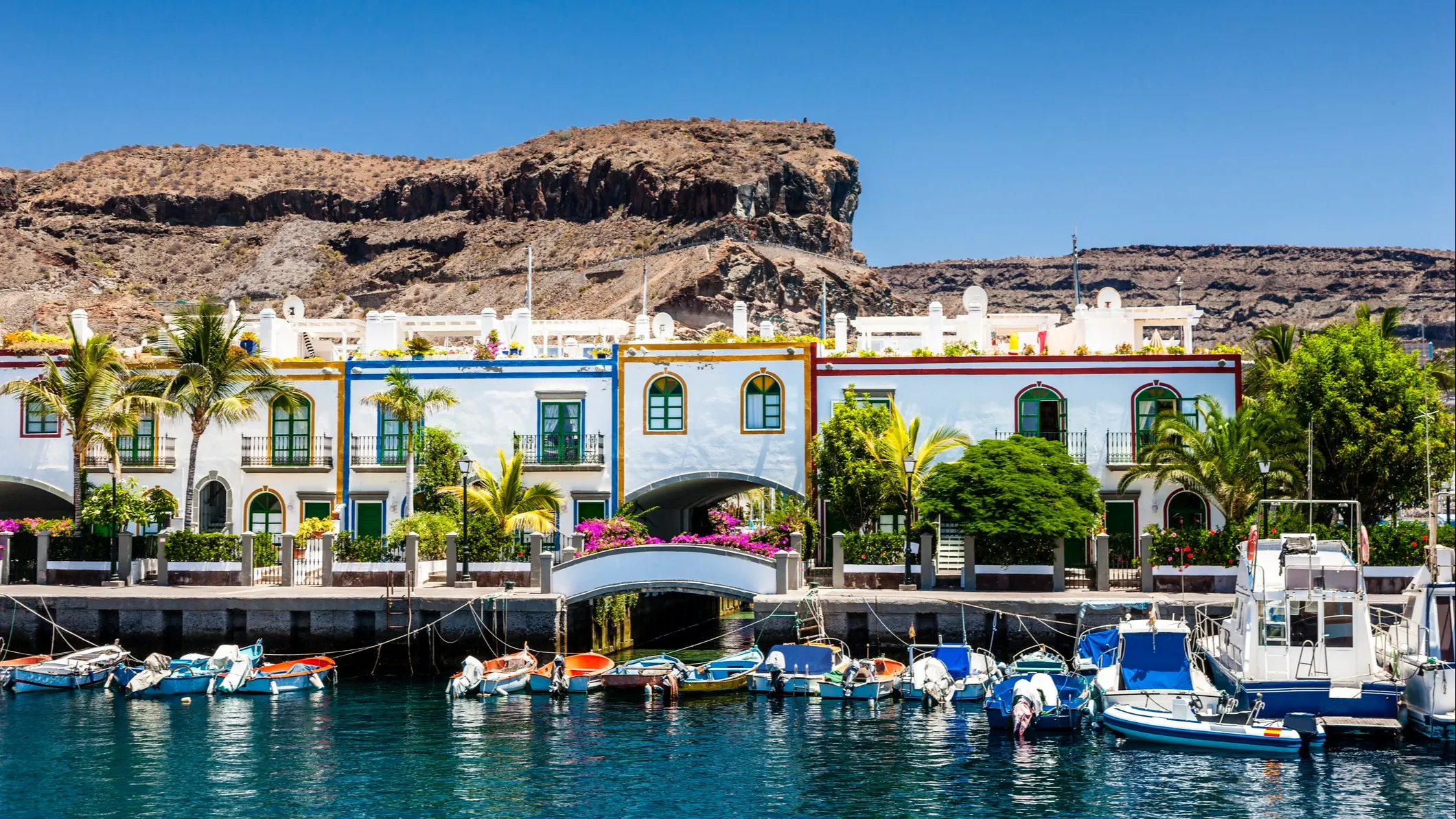
Generally speaking, the Canary Islands have amazing weather and an affordable cost of living. While Gran Canaria and neighboring Tenerife are popular tourist destinations, they are also home to a large expat community. The largest groups include Spanish citizens from the mainland, citizens from the U.K., and Germans.
The climate in Gran Canaria is desert-like, with a low amount of annual precipitation. The weather is warm in spring, summer, and autumn. Winters are mild, with temperatures averaging between 59 F and 69 F. On average, temperature highs reach around 81 F. The annual rainfall averages around nine inches a year with the highest mountains seeing a bit of snow between October and June.
Gran Canaria has well-maintained, modern roads and a good public transportation system, making it easy for people to get around the entire island. Las Palmas has the Gran Canaria Airport which takes travelers to and from Morocco, Mauritania, Senegal, Cape Verde, and Spain. As well, the city has a system of public buses called guaguas. Taxi service is also readily available to residents. You can catch the weekly ferry from Las Palmas to Cadiz, Spain, but the journey is around 40 hours long.
There are over 258 square miles of protected land on the island. These protected natural areas include eight nature reserves such as Inagua and Barranco Oscuro. They also feature four parks, mainly located in rural areas. These parks, Tamadaba, Pilancones, Doramas, and Nublo, have experienced deforestation over the years, and local governments have developed reforestation programs in recent decades to address the problem. That said, they are very popular with locals and visitors who enjoy spending time in nature.
Lifestyle in Gran Canaria
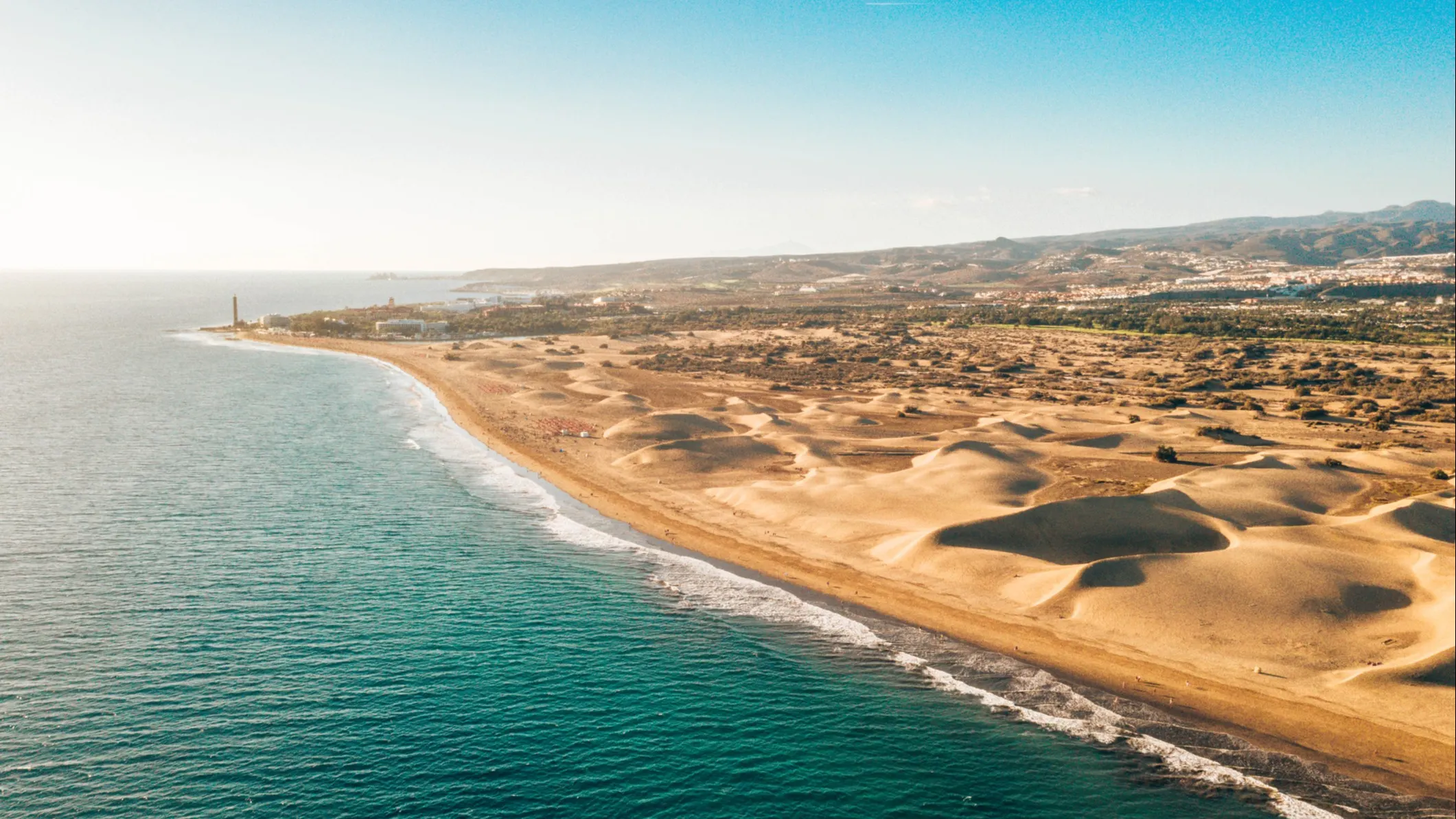
Because of its beautiful landscapes, beaches, and sand dunes, as well as its greenery and picturesque villages, Gran Canaria is considered a biosphere reserve and has protected status with UNESCO. The island receives more than 3.6 million tourists a year. This means many of the seaside towns are usually bustling with life.
Puerto de la Luz is Las Palma’s main port for commercial and fishing vessels and receives many sports and passenger boats. The city is quite walkable, although the terrain is hilly. There are many amazing hiking trails to choose from and they often lead to breathtaking views of beaches and bays.
Playa Tiritana is a small beach hidden away in the town of Mogan about 58 miles outside of Las Palmas. This tiny beach is about 328 feet wide with a lovely view of the ocean and crystal-blue waters. Playa de Amadores is a bigger, more popular beach. It has clean, white sand and clear waters, as well as the convenience of nearby restaurants and a lifeguard on duty. Playa de Las Canteras is the largest beach in the city of Las Palmas and is popular with locals and foreigners alike. It has a large boardwalk running parallel to it.
The most popular areas on Gran Canaria are the coastal towns of Maspalomas and Meloneras, located on the south of the island. They are known for their resorts and touristy beaches. If you’re looking for shopping opportunities, these areas have a decent shopping center called Centro Comercial Playa Meloneras. You will also see several hotels in both towns with the typical 20th-century Spanish Colonial Revival style of architecture, which based their design on the colonial buildings of the Americas.
The city of Las Palmas is where most cultural events take place in Gran Canaria. It is host to a number of festivals, celebrations, and concerts annually. Every year, it organizes the Canary Islands Music Festival and the International Film Festival. Las Palmas and its surrounding municipalities also have several museums to offer, including the Museo Canario which has a large collection of historical objects available to the public. There is also a lovely theater (Teatro Perez Galdos) named after Canarian author Benito Perez Galdos, and a museum dedicated to Canarian artist Nestor Martin-Fernandez de la Torre. In addition, residents celebrate their annual Carnaval, one of the most popular events in Spain. The festivities include the gala of drag queens, a street parade, and live music.
When it comes to sports, the city of Las Palmas offers all the usual big-city amenities you would expect. It has an ACB basketball league club called CB Gran Canaria and an arena with a capacity of 11,000 spectators. It also has a soccer club in the second division called UD Las Palmas, and a large stadium with a capacity of over 32,000. In addition to this, you will find an auditorium which plays host to international conferences and events, and several public libraries such as La Biblioteca Simon Benitez Padilla which specializes in the earth sciences.
Las Palmas has two general hospitals, the only large healthcare facilities on the island. That said, there are several smaller private hospitals and medical clinics in the city and around Gran Canaria. The system accommodates both public and private patients, however, in the islands, there may be a long wait for public services. Las Palmas is generally safe, but you should avoid the Santa Catalina Park at night.
Cost of Living in Gran Canaria
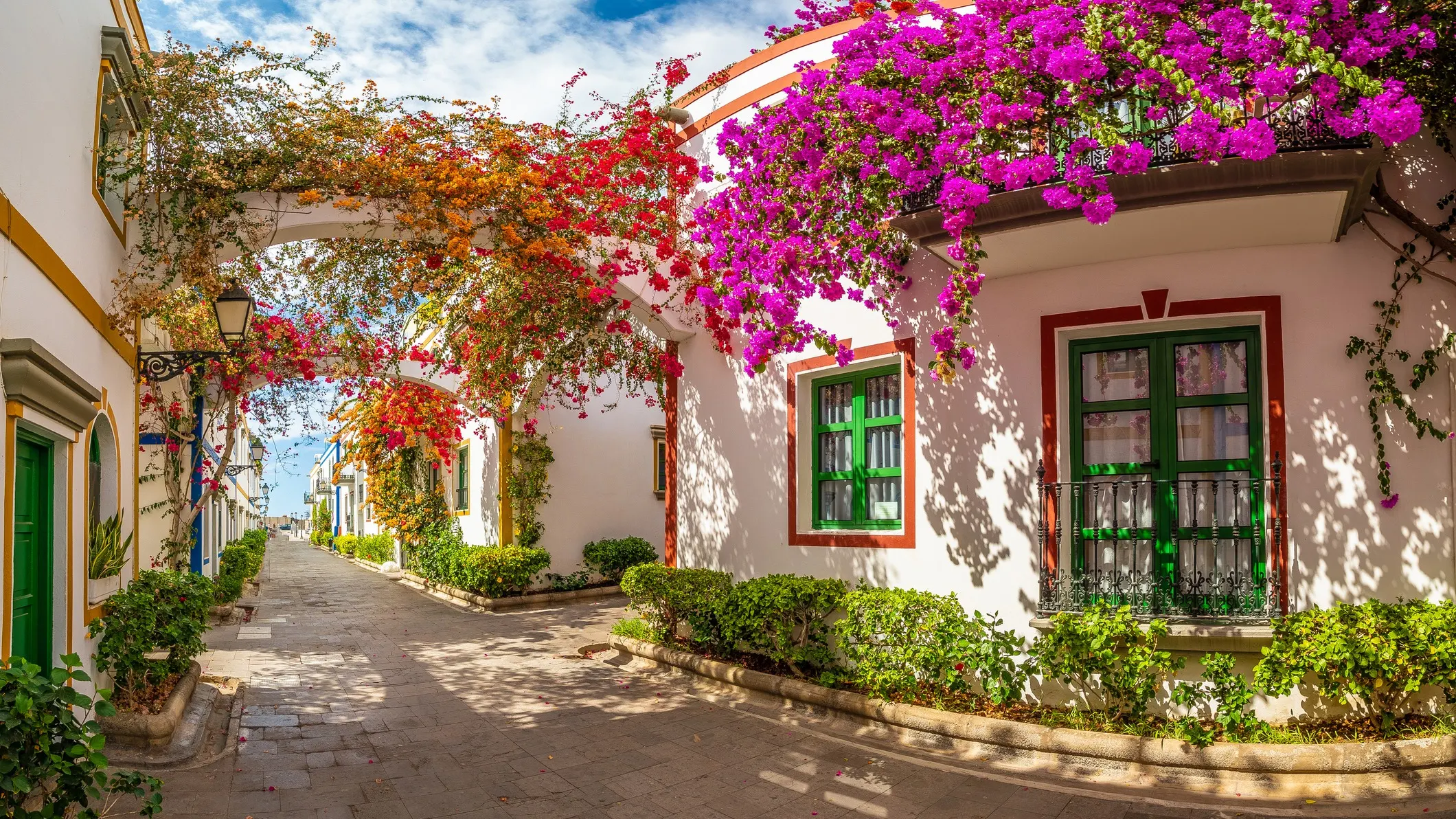
The cost of living in Gran Canaria is more affordable than you would think. While Las Palmas itself and some of the resort towns may have higher rental prices, they remain affordable, and other areas on the island will offer even cheaper options. Renting a one-bedroom apartment in the city center will cost around $750 per month. A three-bedroom apartment will cost around $1,275 per month.
On average, utilities cost around $76 per month, covering heating, cooling, electricity, and water fees. Internet services will cost you an average of $54 per month. Transportation is affordable, with a cost of $1.58 per bus ride, and $40 for a monthly pass. Taxi rides average around $17, and a liter of gas is around $1.14.
The national Spanish health system is run by each region and includes primary, specialist, and hospital care provided by each city. Some municipalities and regions have public health services and offer free treatment to citizens and permanent residents. People generally pay their prescriptions and dental care. As a foreigner you may need to get private insurance coverage for your healthcare needs, depending on your immigration status. The average cost of private health insurance for a couple living in Spain ranges from $100 to $140 per month.
Sports and leisure activities will likely run you around $40 per month for a health club membership, $8.50 per cinema visit, and $37 for a two-person meal at a nice restaurant. Groceries will cost an average of $300 per month.
Below is a Monthly Budget Breakdown for One Person in Las Palmas:
| Expense | U.S. $ |
|---|---|
| Rent (Las Palmas) | $750 to $1,275 |
| Utilities (gas, electric, water) | $76 |
| Internet/Cell phone | $54 |
| Health Insurance | $100 to $140 |
| Transportation (transit, taxis, tank of gas) | $75 |
| Clothing and Miscellaneous | $180 |
| Groceries | $300 |
| Dining and Entertainment | $200 |
| Total: | $1,735 to $2,300 |
Best Things to Do in Gran Canaria
Gran Canaria offers its residents so many beautiful landscapes and beaches, visiting them all will keep you busy for a long time. The city of Las Palmas is the cultural and business center of the island and boasts several modern facilities, museums, and sports venues. If you’re a nature lover and enjoy the seaside life, you will be catered to here, and will likely find yourself feeling at home very quickly.
My most memorable experience in Gran Canaria was eating paella with friends at a seaside restaurant near the ocean and listening to a street musician play the Spanish guitar as we ate. You can find magic in Las Palmas.
Here are just a few interesting activities to do in Las Palmas and the surrounding towns:
Visit Barranco de Guayadeque
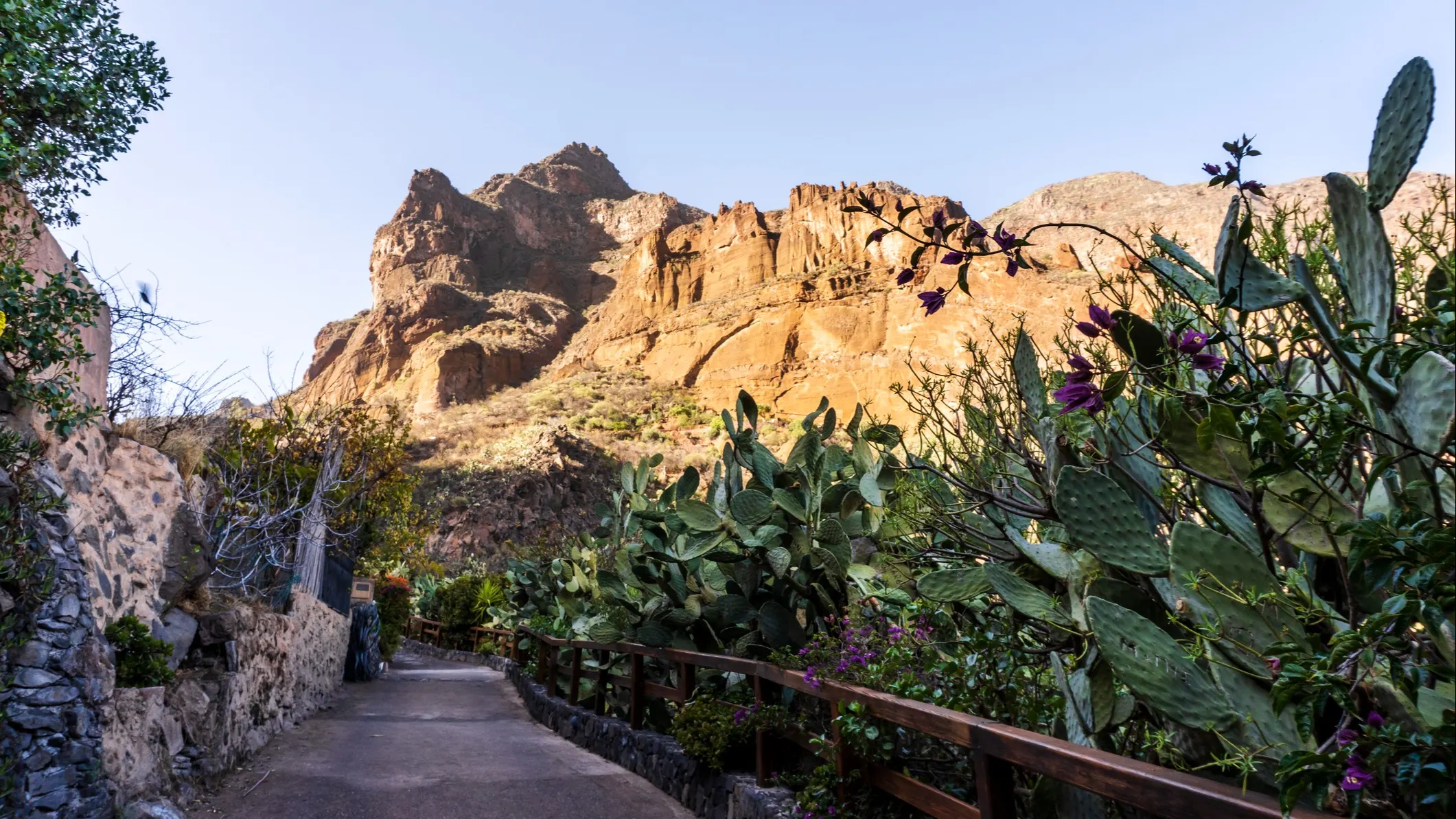
Barranco de Guayadeque is located near the town of Agüimes, about a 45-minute bus ride from Las Palmas. An impressive and sizable ravine, it is home to many local florae and fauna, as well as several medieval cave houses. Visitors also have the option to visit the Guayadeque Museum and learn about the many mummies found in the caves. The cave dwellings were used for storing food, celebrating fertility rituals, and as family homes. The valley is now listed as a protected national heritage site by the Spanish government in an effort to preserve its history.
See the Maspalomas Sand Dunes
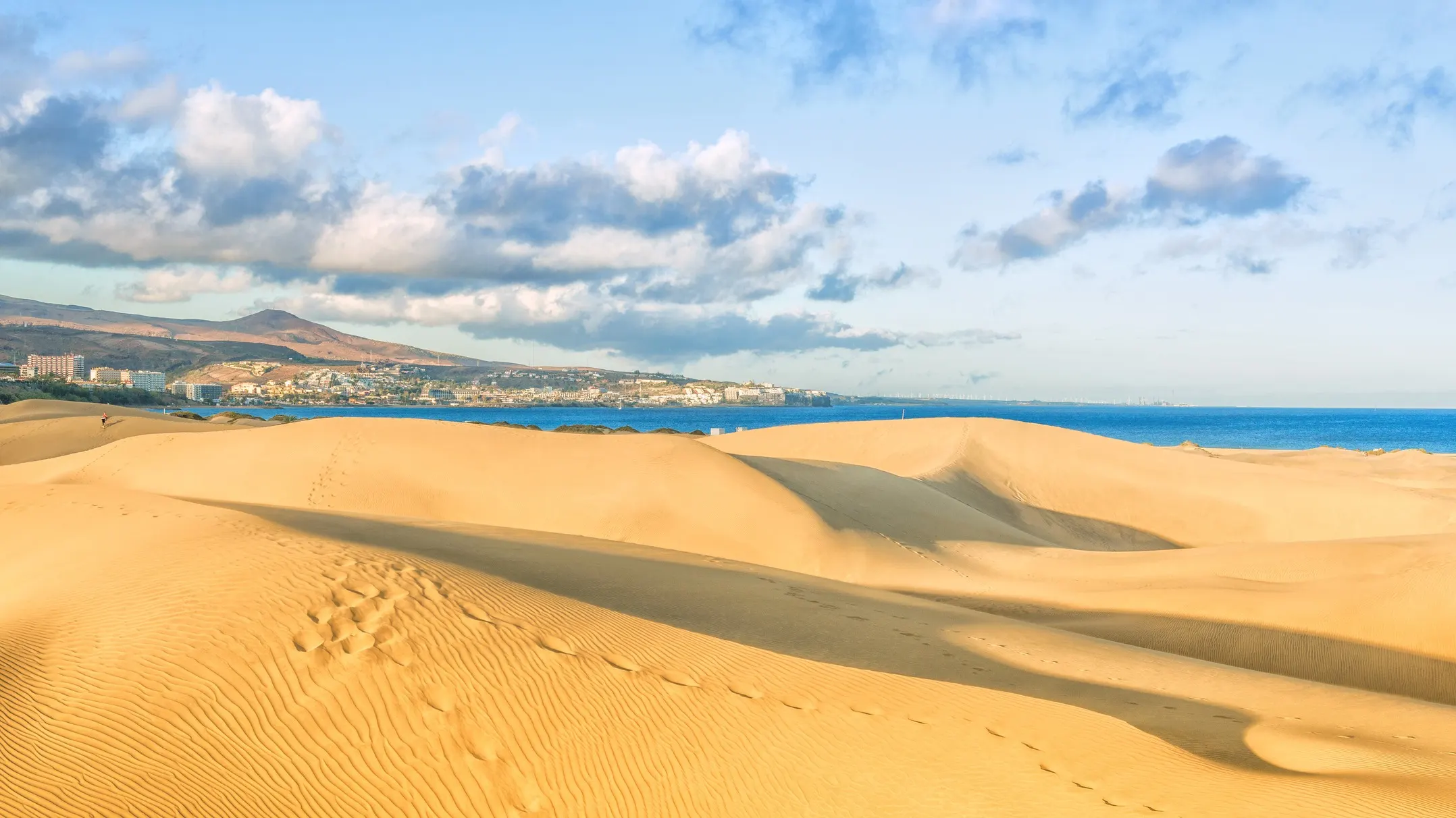
The Maspalomas Dunes are south of the island near the town of San Bartolome de Tirajana. The sands are a protected nature reserve and were formed during the last ice age when the wind blew them towards the island after the water receded. The area is popular with tourists and walking through the sands is allowed on designated paths. The trails are five miles long and the entrance is about a 45-minute drive from the city of Las Palmas.
Discover the Caves of Valeron
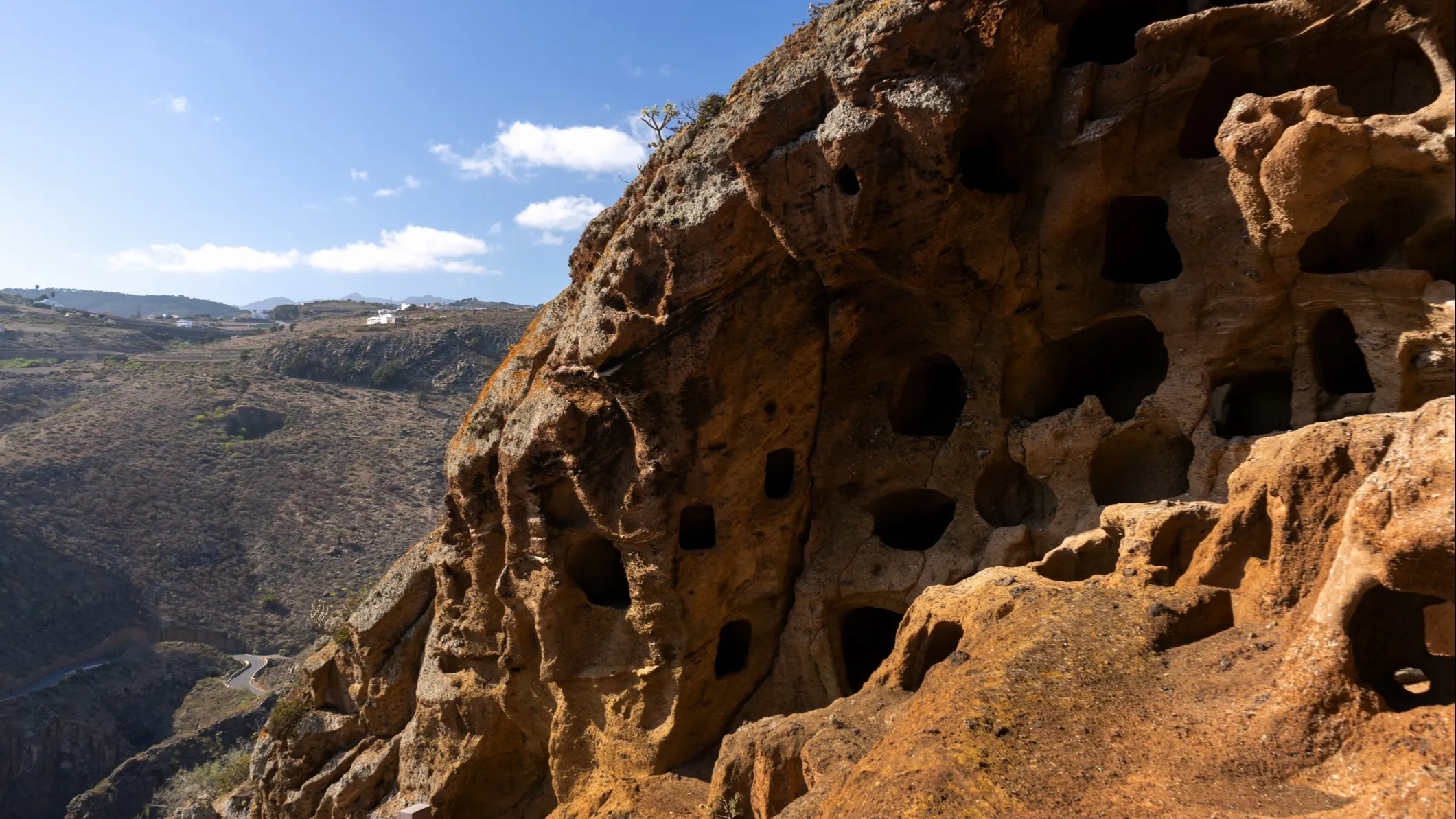
Cenobio de Valeron is an ancient Indigenous settlement located on the cliffs of Montaña del Gallero. The geological site was built more than 800 years ago and was used for grain collection storage. More than 350 cavities are lining the escarpment from top to bottom. The word cenobio means monastery, however, the name is based on a false theory that the cavities were once used as a convent for young noble women. Guided tours are available to visitors.
Visit the Botanical Gardens in Las Palmas

The Jardin Botanico Canario is about four miles outside of Las Palmas and is the region’s most important flora conservation area. The garden features many plant species indigenous to the Canary Islands and the Macaronesia region. Entrance is free and you can visit various natural habitats on the property, including the Camino de los Dragos (Path of the Dragons) and the Jardin de las Islas (Garden of the Islands).
Visit the Mirador del Pico de Las Nieves
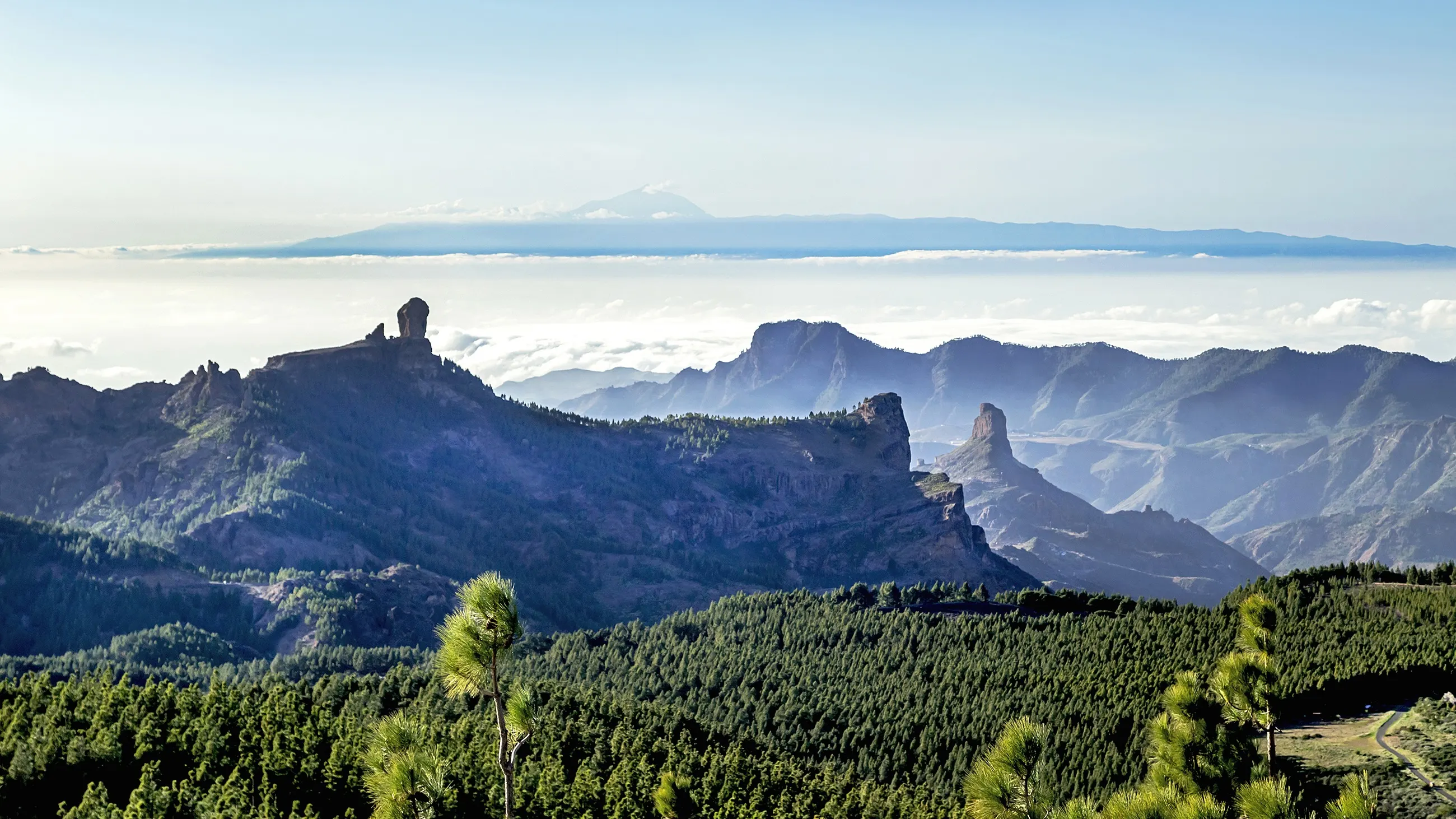
Technically speaking, the highest point on Gran Canaria is the Morro de La Agujereada—this majestic mountain is 6,417 feet high—although this is contested by many locals who believe the Pico de Las Nieves is the tallest on the island. You can view both mountains from the Mirador del Pico de Los Pozos de Las Nieves. There are official and unofficial trails available to visitors. It is recommended to wear a light jacket or sweater as well as good footwear since the climate becomes much cooler as you climb in altitude. Amateur photographers will enjoy discovering many of the local rock formations while walking on the trails.
Featured Image Copyright: ©Balate Dorin/iStock
Get Your Free Spain Report Today!
Get Your Free Spain Report Today!
Learn more about the lower cost of living in Spain and other countries in our free daily postcard e-letter. Simply enter your email address below and we'll also send you a FREE REPORT — Live the Good Life in Sunny, Affordable Spain.

By submitting your email address, you will receive a free subscription to IL Postcards and special offers from International Living and our affiliates. You can unsubscribe at any time, and we encourage you to read more about our Privacy Policy.
